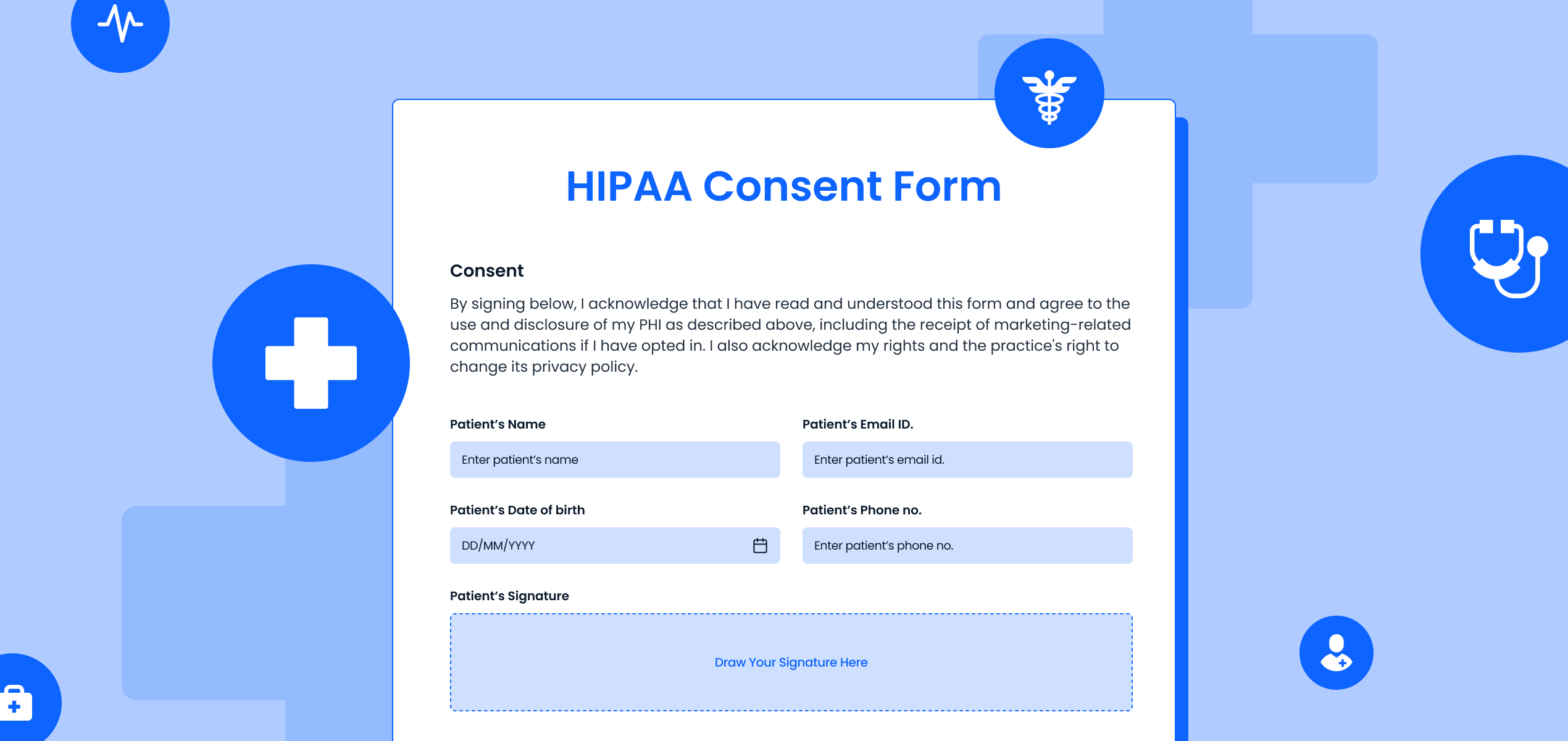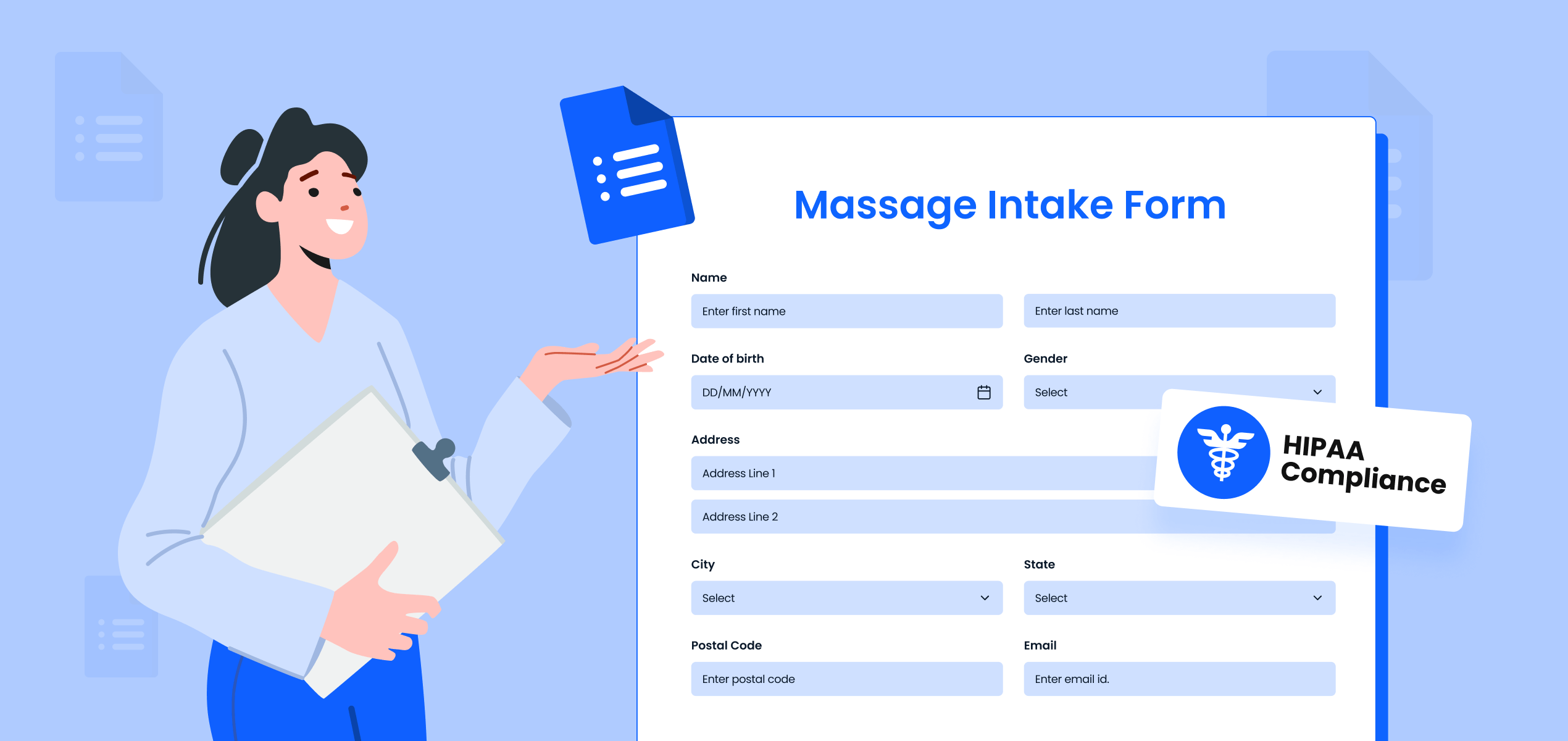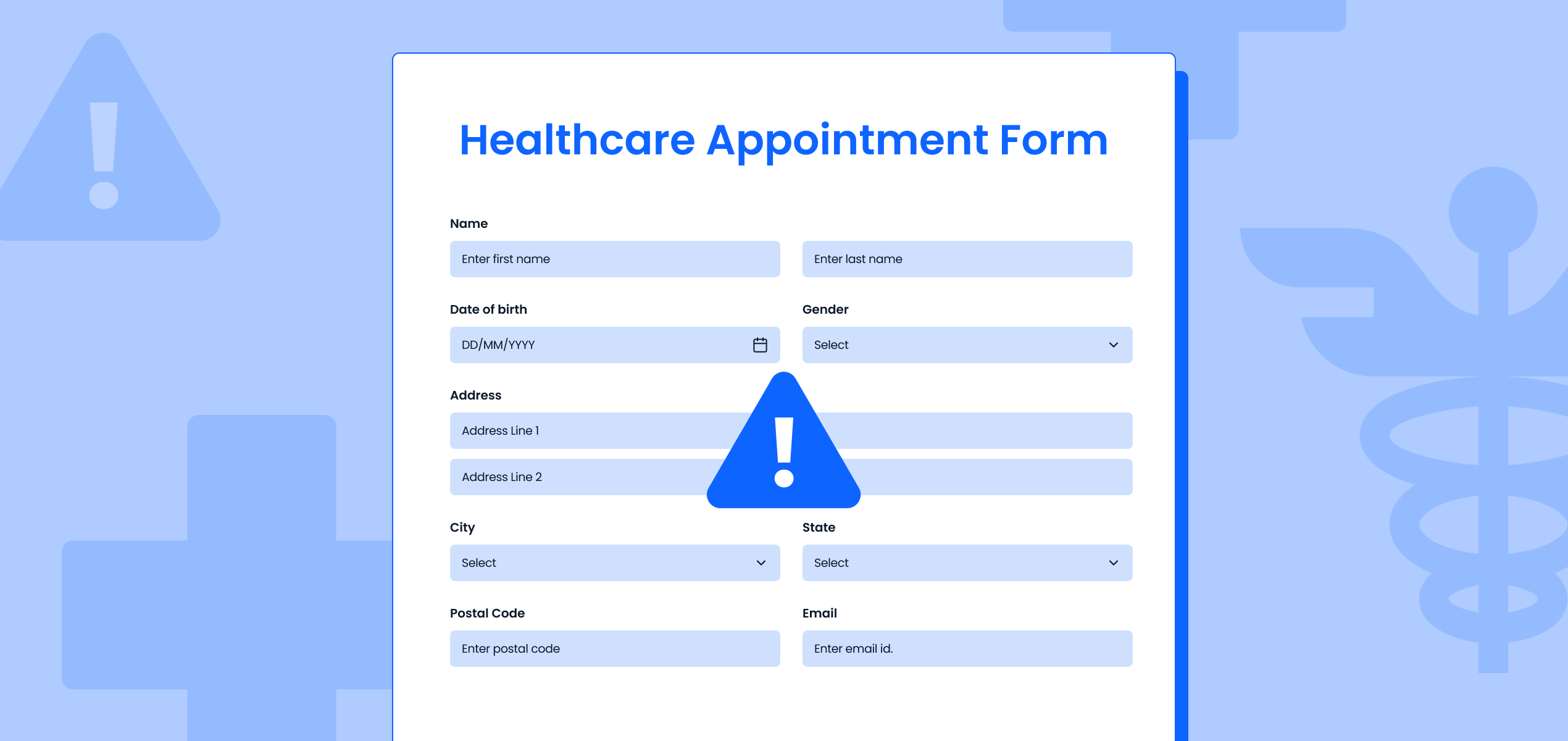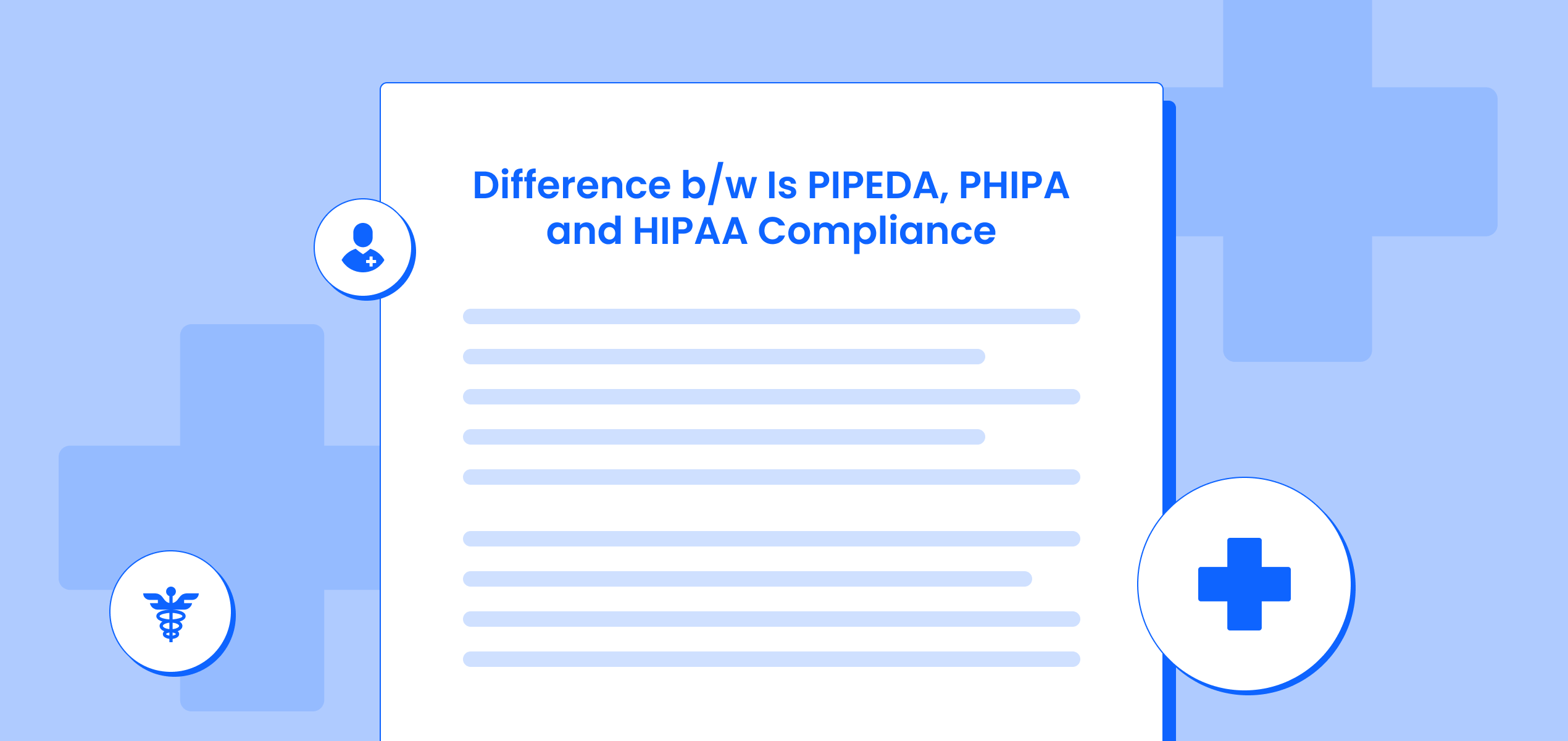Summary:
- HIPAA consent forms protect patient privacy in healthcare. They act like agreements between patients and doctors explaining how medical records are used. By signing, patients agree to these terms.
- These forms come in two main types: authorization to release PHI to a specific third party, or authorization for routine PHI sharing within a healthcare practice.
- Key elements of a HIPAA consent form include patient/doctor info, details about the PHI involved, why it’s used, patient rights regarding their data, and an expiration date.
In today’s healthcare industry, where patient data is increasingly digitized, protecting their privacy is highly crucial. The Health Insurance Portability and Accountability Act (HIPAA) sets standards to help safeguard patient’s Protected Health Information (PHI)- this includes the patient’s details and health status.
But how do healthcare organizations translate this into their everyday practice? One of the
Why are HIPAA Consent Forms Important?
One can consider HIPAA Consent forms as a written contract between the doctor and the patient. It explains the specifics of how their information will be used and disclosed. When a patient signs this form, they acknowledge their understanding and give the healthcare practice permission to use their information as described.
It’s not just a formality, HIPAA Consent forms serve two main purposes:
- Protecting the patient: These forms give patients control over their health information. They have the right to understand how this information will be used and can choose whether or not to consider it. Patients can also request a copy of their medical records at any time.
- Protecting the healthcare provider: The HIPAA consent form serves as written evidence of their patient’s consent. By obtaining appropriate consent forms, healthcare providers are protected from any legal repercussions of unauthorized disclosure of patient information.
Types of Consent in Healthcare Forms
There exist different types of consent within the healthcare realm. Before designing consent forms, let’s discuss what they are and when are they used:
- General Consent: This is typically obtained at the beginning.. It covers the use of patient’s health information for routine healthcare activities like treatment, payment processing, and healthcare operations within the organization. Patients usually grant this consent through a HIPAA-compliant authorization form.
- Specific Consent: This type of consent is required when a patient’s health information is used or disclosed for specific purposes beyond routine healthcare. Examples include using their data for research studies, marketing campaigns, or sharing it with third-party specialists. As a healthcare provider, you are to offer a dedicated consent form that clearly explains what information is involved, who will receive it, and for what purpose.
- Emergency Consent: In critical situations where obtaining a patient’s written consent might delay essential treatment, emergency consent may be sought. This typically involves verbal communication from the patient or a healthcare proxy, and you must document the circumstances surrounding the consent.
- Implied Consent: Patient’s actions can sometimes imply consent. For instance, scheduling an appointment suggests that the patient agrees to have their information used for that specific treatment. However, implied consent has limitations and cannot be used for broader purposes beyond the context of their visit.
- Revocable Consent: The power ultimately lies with the patient. They have the right to revoke their consent at any time, and healthcare providers must honor their request. This right should be clearly explained when obtaining consent, and the process for revoking it should be straightforward.
Understanding these different types of patient consent empowers the patients to make informed decisions about their health information. Remember, the patients have control over their data, and healthcare providers such as yourself are obligated to obtain their permission before using it.
What Does a HIPAA Consent Form Typically Include?
A well-structured HIPAA consent form should include the following key sections:
- Patient Information: Start with fields for their full name and date of birth (or other unique identifier permitted by HIPAA) that helps identify the patient.
- Healthcare Provider Information: Next, fields for the provider’s name, address, and contact information, that helps identify the healthcare provider or covered entity seeking authorization to use or disclose PHI.
- Description of Protected Health Information (PHI): Use this section to specify types of PHI that will be used or disclosed under the authorization. This could include a patient’s medical history, treatment records, billing information, etc.
- Purpose of Use/Disclosure: Here, explain why the PHI is being used or disclosed. It should identify the intended recipient(s) of the information and the reason for sharing it (e.g., referral to a specialist, insurance claim processing).
- Patient’s Rights: In this section inform the patient of their HIPAA rights and it typically includes their right to:
- Access and copy their medical records.
- Request amendments to their medical records (if inaccurate or incomplete).
- Request an accounting of disclosures of their PHI.
- Revoke this authorization (with exceptions).
- Expiration Date: Add a section that specifies the date after which the authorization to use or disclose PHI will no longer be valid.
- Signature Section: End with a signature section, for the patient to acknowledge their understanding of the form and provide their written consent. It should include space for the patient’s signature, printed name, and date of signature. The healthcare provider or a designated representative may also need to sign and date the form.
How to Use a HIPAA consent form Effectively?
The Patient’s Role:
- Patients have the right to carefully review their consent form before signing.
- They can ask questions to better understand how their information will be used.
- Patients can choose to refuse to sign the form altogether or revoke their previously granted consent (with exceptions).
The Healthcare Provider’s Role:
- You are responsible for obtaining a patient’s informed consent before using or disclosing their PHI.
- You must provide a clear and concise explanation of the information you need and the purpose of the disclosure.
- Failing to obtain proper consent or violating HIPAA regulations can lead to heavy penalties.
Conditions for Informed Consent
For HIPAA Consent to be valid, the patient must be competent and have all the necessary details to make an informed decision. In some cases, a patient’s legal representative may need to provide consent.
HIPAA Consent Forms Go Online
HIPAA Consent forms help safeguard patient’s information but managing paper forms can be time-consuming.
MakeForms offers a user-friendly online solution that helps create HIPAA-compliant forms with features like a drag-and-drop interface, pre-built templates & more. It helps you simplify your consent forms by allowing patients to fill them in from home, submit signatures, and more. All of this while maintaining complete data control through robust security features.
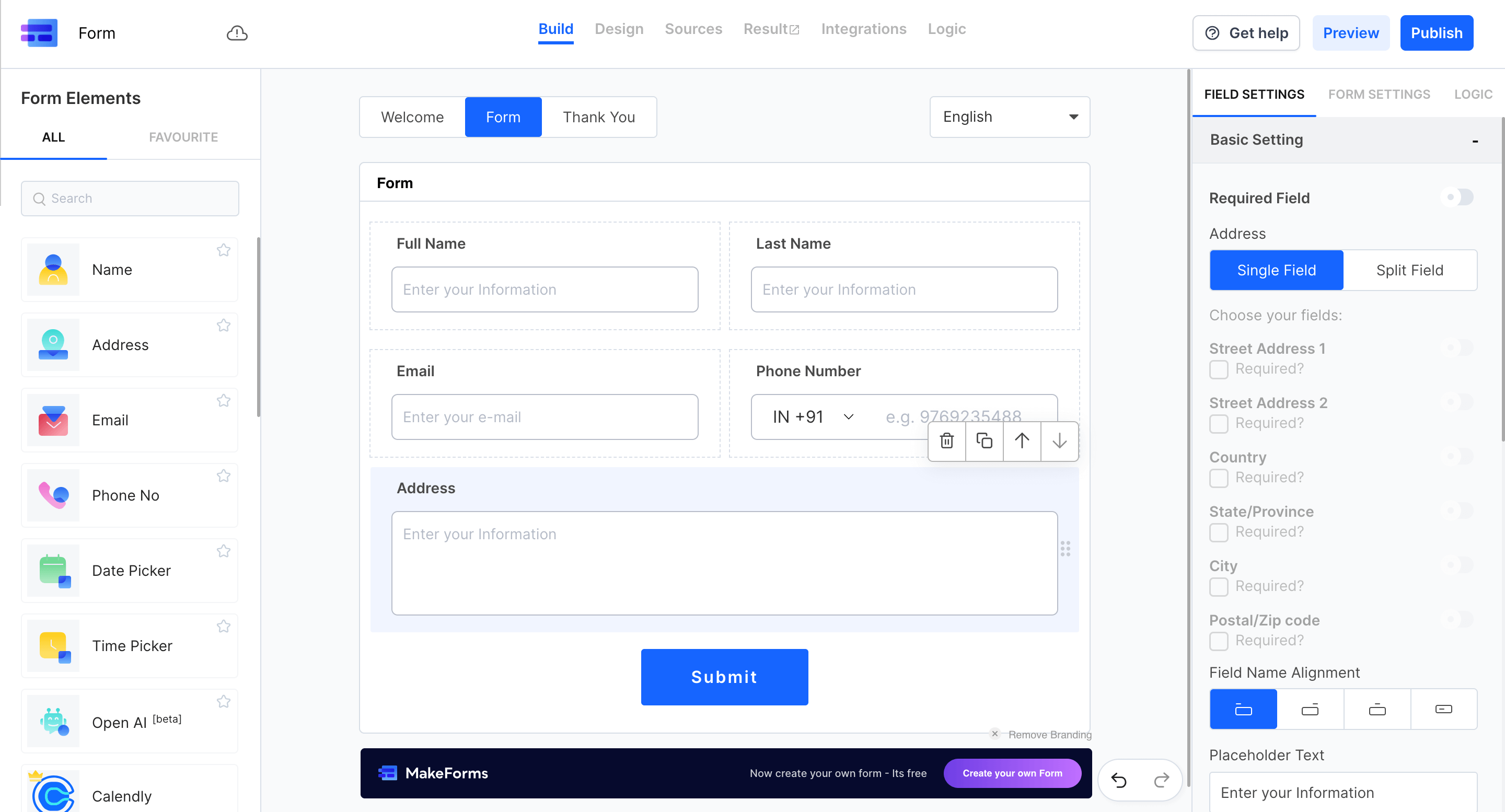
With MakeForms, you can focus on what matters the most-providing excellent patient care.
FAQs
It’s a written agreement between you and your doctor explaining how your medical information will be used and shared.
HIPAA Consent forms protects your privacy and gives you control over your health information. It also protects healthcare providers from legal issues.
General consent, Emergency consent, Specific consent, Implied consent, Revocable consent. Each consent serves a specific purpose.
A HIPAA Consent form must include the following fields:
- Patient and provider information
- Description of the PHI involved
- Purpose of using/disclosing the PHI
- Patient’s rights regarding their data
- Expiration date
- Signature section
